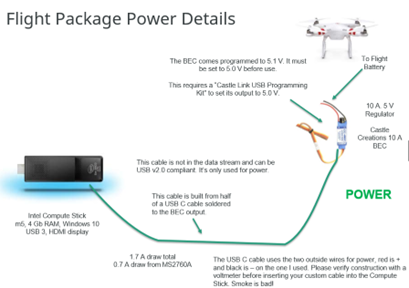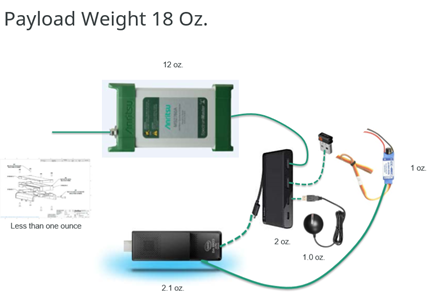Drone-based-antenna-radiation-pattern-characterization for antenna on complicated systems is a big challenge; thus, the idea of using unmanned aerial vehicles (UAVs) that integrate automatic data collection and processing was invented. However, due to economic ineffectiveness, experts have come up with a solution using a handheld spectrum analyzer mounted on a drone to reduce costs and improve investment efficiency.

Drone-based antenna radiation pattern characterization for low-frequency range antennas (the frequency range of naval ship antennas) fixed on complex systems is challenging when performing field measurements in remote areas, especially for antennas with large sizes and weights. Therefore, the idea of using unmanned aerial vehicles (UAVs) to integrate automatic data collection and processing was invented.
However, in terms of investment efficiency, using a drone model is not an economically effective solution because the cost of a drone is too high. Based on the need to build pattern characterization for fixed antennas on naval ships with a low budget, leading experts in the field of antenna measurement and quality assessment from Anritsu have come up with a solution using a handheld spectrum analyzer with minimal size and weight mounted on a drone, collecting data, then processing it with software to reduce costs and improve investment efficiency significantly.
Technical solution
- Working frequency range: up to 110 GHz
- Types of antennas that can be measured: phased network antennas, parabolic antennas, etc.
- The size of the largest open surface of the antenna needs to be measured in the azimuth plane: up to 16m
- The size of the largest open surface of the antenna needs to be measured according to the abtuse angle plane: up to 4m
- Antenna gain coefficient to be measured: The maximum that can be measured is 50 dB
- Side beamwidth level of the antenna to be measured: The maximum that can be measured is 45 dB
- Polarization types: vertical, horizontal
- Directional diagram of the antenna to be measured in azimuth: 360 degrees
- Directional diagram of the antenna to be measured according to the abtuse angle: fixed
With the above features, antenna parameters that can be measured and evaluated include:
- 2D and 3D diagrams of the azimuth and elevation angle planes
- E, H plane polarization
- Antenna gain coefficient, directivity
- Maximum radiation angle
Basic measuring principles
Description of the basic measurement method using the far field method:
From the requirements for testing radar antennas installed on naval ships, with complex connections, large size and weight, disassembly is completely difficult, further requiring a system. Far-field measurements are complicated and cumbersome.
The antenna to be measured will be fixed on the ship or mounting system.
The receiving antenna will be installed on the control aircraft to perform testing at a distance far enough to ensure the pah properties of the signal at the contact surface of the irradiated antenna.
To ensure measurement accuracy, the distance between the antenna to be measured and the transmitting antenna must ensure:
Distance ≥ 2D^2/l
Where: D is the open-face size of the antenna
l is the wavelength of the antenna to be measured
Structure and composition of measuring solution
The diagram of the antenna solution using the far-field measurement method, giving the diagram is described as follows:

– Signal collection part:

– Power supply to the receiver:

– Total volume of the receiver

Advantages of the solution
- Using drones and handheld spectrum analyzers has significantly reduced the size of the system, reduced costs, and increased cost efficiency
- The receiver has a wide working range, is high quality, suitable for many types of antennas, and produces accurate results
- Completely eliminate the need to disassemble and move large antennas when performing measurements
- Eliminate the influence of terrain on measurements
- Because there is no reference antenna system to align the phase, this solution is only suitable for measuring antenna radiation reduction.
Limitations of the solution:
- Drones have limited battery life, making it challenging to perform long, continuous measurements
The solution does not meet the requirements for measurements that require high accuracy. However, regarding investment efficiency and testing needs, this solution suits projects with low budgets.
Our company always wishes to become a reliable partner and a leading supplier of equipment and solutions for the success of our customers. For more detailed information, please contact:
MITAS Hanoi Technology JSC
Address: 5th Floor, C’Land Building, No. 81 Le Duc Tho St., My Dinh 2 Ward, Nam Tu Liem Dist., Hanoi, Vietnam
Web: https://mitas.vn | Tel: (+84) 243 8585 111 | Email: sales@mitas.vn
The trust and support of our customers are a driving force and an invaluable asset to our company. We sincerely thank you./.
